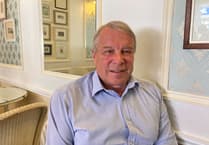A GROUP researching the history of former World War Two RAF bases on the Blackdown Hills above Wellington is appealing for help.
Stuart Hayman set up RAF Culmhead Research Group (RCRG) four years ago to compile a history of the station, which was known as RAF Church Stanton during the war.
The group also works closely with Brian Lane-Smith, chairman of the South West Airfields Heritage Trust (SWAHT), which preserves the region’s aviation history for future generations and runs heritage centres at Dunkeswell and Upottery airfields.
Mr Hayman said: “As a research group we not only look at the history of Culmhead from WW2 to the present day but we do other things, such as researching building architecture, what the buildings used to look like then and now.
“We investigate the squadrons which were based at Culmhead, crashes that were linked to Culmhead, and the pilots who were based there.
“There is a tour around the Culmhead site which operates through SWAHT, with more information on their website.”
Mr Hayman said he wanted to hear from anybody who may have had family who worked on the site, which later was used as a listening post by Britain’s spy service GCHQ before becoming a business park.
He said: “If anybody has relatives, grandparents or great uncles etc who used to work there, I would like to hear from them by email [email protected] or through the RCRG Facebook page, which people can also use to ask me any questions they may have.”
Mr Hayman said the car park in the main entrance to Culmhead now contained an operations stone which carried information about the year it was opened and closed which was installed by the Airfields of Britain Conservation Trust, a non-profit organisation working to preserve and protect airfields in Great Britain and to educate people about their history.
Two blue information boards designed and donated by SWAHT have also been erected.
RAF Church Stanton operated for five years from August, 1941, and was used during the war by RAF Fighter Command, which stationed a Polish squadron there, later changing its name to Culmhead.




Comments
This article has no comments yet. Be the first to leave a comment.